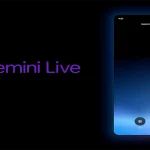- PLAYFULGHOST Malware: A Detailed Analysis of the Trojanized VPN Threat
- Understanding PLAYFULGHOST: Origins and Links to Gh0st RAT
- Advanced Techniques for Execution and Persistence
- Capabilities of PLAYFULGHOST: A Multifunctional Threat
- Steps to Mitigate <strong>PLAYFULGHOST Malware</strong> Infections
- The Broader Implications of <strong>PLAYFULGHOST Malware</strong>
PLAYFULGHOST Malware: A Detailed Analysis of the Trojanized VPN Threat
As cybersecurity threats evolve, attackers consistently devise new methods to exploit unsuspecting users. One of the latest and most concerning developments is PLAYFULGHOST Malware, a sophisticated backdoor malware targeting VPN users. Combining phishing attacks, search engine optimization (SEO) poisoning, and advanced execution techniques, PLAYFULGHOST represents a significant threat to user privacy and system security. This article provides an in-depth look into the malware’s origin, capabilities, and prevention strategies.
Understanding PLAYFULGHOST: Origins and Links to Gh0st RAT
PLAYFULGHOST Malware is the latest cyber weapon identified by Google’s Managed Defense team. Its design and functionalities bear a strong resemblance to Gh0st RAT, a notorious remote administration tool (RAT) whose source code was leaked in 2008. By building upon Gh0st RAT’s foundation, attackers have significantly enhanced PLAYFULGHOST to create a more robust and versatile tool.
This new malware variant is integrated into legitimate-looking VPN apps, such as LetsVPN, and primarily targets Chinese-speaking Windows users. However, given the global nature of VPN services, the potential scope of this malware extends far beyond regional boundaries.
Initial Access: Phishing and SEO Poisoning Techniques
The threat actors behind PLAYFULGHOST Malware employ two primary attack vectors to infiltrate systems:
1. Phishing Emails
Phishing remains one of the most effective tools for cybercriminals. In the case of PLAYFULGHOST, attackers send carefully crafted emails containing malicious attachments. These emails often include code of conduct-related themes to appear legitimate. The attachments, disguised as .RAR archives with .jpg extensions, trick users into believing they are safe image files. Once extracted and executed, the archive deploys a malicious executable that downloads PLAYFULGHOST from a remote server.
2. SEO Poisoning
The attackers also use SEO poisoning to manipulate search engine rankings, making malicious websites appear trustworthy. These sites host infected installers for VPN apps like LetsVPN. Unsuspecting users who download and install these apps inadvertently execute a chain of events leading to the malware’s deployment. The compromised installer first drops an interim payload, which then retrieves and loads PLAYFULGHOST into the system memory.
Advanced Techniques for Execution and Persistence
PLAYFULGHOST uses a range of sophisticated techniques to execute its payload and establish persistence on infected systems.
Execution Methods
- DLL Search Order Hijacking and Side-Loading
The malware manipulates DLL files to ensure its payload runs without raising suspicion. By exploiting legitimate system processes, PLAYFULGHOST loads its malicious DLL into memory. - Windows Shortcut Exploits
A shortcut file (QQLaunch.lnk) combines data from other files to create a rogue DLL. This DLL is sideloaded using a renamed version ofcurl.exe, allowing the malware to bypass traditional security mechanisms. - BOOSTWAVE and Terminator Utility
PLAYFULGHOST employs BOOSTWAVE, a shellcode-based in-memory dropper, to deliver its payload. It also uses the Terminator utility, which exploits vulnerable drivers in a Bring Your Own Vulnerable Driver (BYOVD) attack to disable antivirus software and other security measures.
Persistence Mechanisms
PLAYFULGHOST secures its foothold on infected systems through multiple methods:
- Modifying Run registry keys.
- Scheduling persistent tasks in Windows Task Scheduler.
- Adding itself to the Windows Startup folder.
- Installing a Windows service.
These techniques ensure the malware remains active even after a system reboot or basic cleanup attempts.
Capabilities of PLAYFULGHOST: A Multifunctional Threat
PLAYFULGHOST is more than just a backdoor—it is a comprehensive information-gathering and manipulation tool. Some of its notable capabilities include:
Data Collection
- Keystroke Logging: Tracks every key pressed by the user.
- Screenshot and Audio Capture: Monitors screen activity and records audio.
- System Metadata Collection: Gathers detailed information about the infected system.
- Account Harvesting: Extracts information from applications like QQ.
- Browser Exploitation: Targets browser caches, cookies, and profiles from Chrome, Firefox, and others.
System Manipulation
- Blocks user input by disabling the keyboard and mouse.
- Clears event logs to erase evidence of its presence.
- Wipes clipboard data to remove copied content.
- Deletes user profiles and local storage from messaging apps such as Skype, Telegram, and QQ.
Malware Deployment
- Payload Dropping: Downloads and executes additional malware.
- Rootkit Deployment: Hides its presence by concealing files, registry entries, and processes.
Who Are the Targets?
The targeting of specific applications like Sogou, QQ, and 360 Safety, alongside the use of LetsVPN lures, strongly indicates that PLAYFULGHOST Malware primarily focuses on Chinese-speaking users. However, similar campaigns in the past have shown that this tactic can be adapted for broader audiences. For instance, a campaign in mid-2024 used fake Google Chrome installers to deliver the Gh0st RAT malware via a dropper named Gh0stGambit.
Steps to Mitigate PLAYFULGHOST Malware Infections
Given the sophisticated methods employed by PLAYFULGHOST, it is crucial to adopt a multi-layered approach to cybersecurity. Here are some essential steps:
- Beware of Suspicious Emails
Always verify the sender’s authenticity before opening attachments or clicking links. - Download Software Only from Official Sources
Avoid downloading apps or updates from unverified websites, even if they appear legitimate. - Invest in Advanced Security Solutions
Use antivirus software capable of detecting advanced threats like PLAYFULGHOST. Enable features such as behavior-based detection. - Regular Updates and Patching
Ensure your operating system and applications are up-to-date to reduce vulnerabilities. - Educate Users
Conduct regular training sessions to help users recognize phishing attempts and malicious links.
The Broader Implications of PLAYFULGHOST Malware
The emergence of PLAYFULGHOST Malware highlights the growing sophistication of cyber threats. Its ability to use advanced persistence mechanisms, data collection tools, and regional targeting tactics makes it a formidable challenge for individuals and organizations alike. Furthermore, the reliance on widely-used software like VPNs underscores the importance of securing essential tools and services.
As attackers continue to refine their methods, cybersecurity measures must evolve to keep pace. For businesses and individual users, adopting proactive security practices is no longer optional—it is a necessity.
Cyber threats like PLAYFULGHOST are a reminder of the ever-present risks in the digital age. Stay informed, stay protected—share this article to spread awareness and leave your thoughts in the comments. For more insights, explore our related content on malware trends and cybersecurity best practices.







